The Rhetoric of the Loop: Animated GIFs and Documentary Film
Colin Beckett / Independent Critic
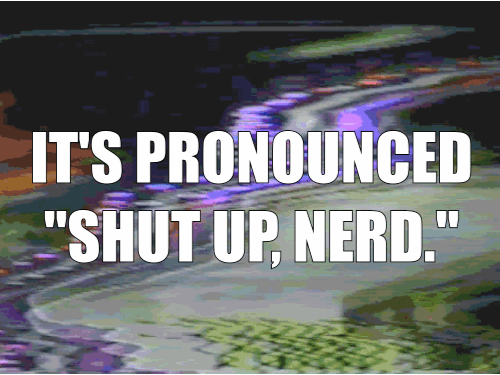
If the question of the loop, as such, is an urgent and central one in considering contemporary moving image documentary, it is because of the animated GIF. The animated GIF has become one of the most significant forms of media in our present moment. And while the nature and extent of that significance is open to debate, we can definitively say they are the type of visual media that we most frequently see looping.
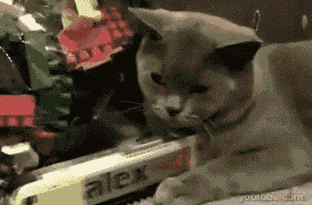
An animated GIF does not, by definition, have to loop, but almost all of them we encounter online do. Designed to present digital, color images with a remarkably efficient kind of lossless compression, the Graphics Interchange Format quickly became a pervasive component of the World Wide Web after they were introduced by CompuServe in 1987 — and, for a little while, after a second, enhanced version of the file format was released in 1989, the only common source of moving images on the web.
Early animated GIFs were mostly composed of primitive, clip-art style drawings that, from the vantage of the present, only underline the early web’s comparative technological austerity. As computing speeds have increased, bandwidth become cheaper, and the internet transformed into a major venue of accumulation, animated GIFs have grown far more elaborate, coming to more closely resemble video. We now even see “full movie” GIFs.

The affinity between animated GIFs and cinema is obvious, if somewhat complicated in its details, and they have already begun to exert an influence on the way that movies and television shows are made and used. But while the great majority of animated GIFs function as non-fiction of one kind or another, deployed to directly describe or intervene in the world shared by audience and maker, they bear no obvious relevance to the tradition of documentary. To consider the animated GIF in this context, then, we must find our coordinates with three related points of reference: news journalism and online media; early cinema; and the visual art world.

Animated GIFs have been widely adopted by journalists and other internet media professionals, not unselfconsciously. We can turn to them for news bites, sports highlights, and human interest micro-stories. They are used to illustrate scientific phenomena, and to teach simple tasks. Beyond the online editions of more traditional news sources, the animated GIF has been a central tool by which sites like Gawker and Buzzfeed have fabricated a new set of quasi-journalistic practices and clichés.
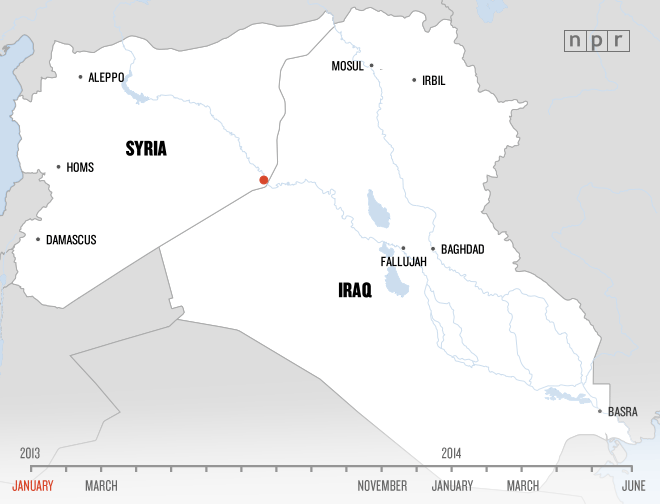
The GIFs produced or deployed by major media organizations are only responsible for a small percentage of the ones we see — and GIFs that serve primarily informational purposes not a much larger one. There is only a limited range of human activity about which animated GIFs can effectively inform us. And even when an individual GIF does depict some noteworthy thing in the world, it only does so for a short period of time before passing into other uses, suggesting that even at their most instructive, GIFs are consumed primarily as diverting spectacle — a sort of worst-case scenario from the perspective of sober documentary.
The animated GIFf’s tendency toward the spectacular calls to mind, like much else in postcinematic moving image culture, the pre-1906 mode of filmmaking that Tom Gunning called the “cinema of attractions”. Like the early cinema that Gunning surveys, many animated GIFs bombastically perform simple technological tricks that, while somewhat flimsy in illusion, carry the immense power of the young medium’s exhilarating possibilities — offering, as Gunning wrote, “exhibitionistic confrontation rather than diegetic absorption.”
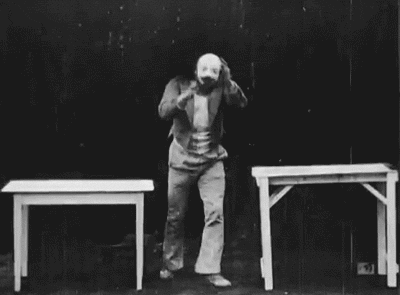
“It was,” Gunning writes, “precisely the exhibitionist quality of early cinema that made it attractive to the avant-garde — its freedom from the creation of a diegesis, its its accent on direct stimulation.” And we find something similar with the animated GIF, which was picked up and celebrated by visual artists for its affective immediacy and its vulgar populism long before it became a fixture of mainstream cultural expression.
Like informational GIFs, artist’s GIFs typically to operate on the terms of the spectacular — here in the service, theoretically at least, of novel modes of seeing and feeling. Owing partly to this tendency, and partly to trends in media studies, this affective dimension of GIFs has been seized upon by an ever-growing number of commentators on GIF art.

Whether uploaded anonymously to imgur or produced by a media team at a major newspaper, popular animated GIFs travel across spaces that are heterogenous in both form and social composition, like the vaudeville houses that were the most common home for the cinema of attractions. Their meaning is made in circulation rather than in their construction; it is a medium to be deployed rather than consumed. The effort to reverse this process and fix authorship and context is what distinguishes an artist’s GIF from the rest.
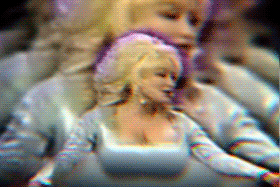
References to early cinema, however, quickly confront their own limitations in explaining the animated GIF. Gunning argued that the cinema of attractions was rooted in a celebration of film’s then-awesome “ability to show something.” Circulating in an ecology overrun with moving images, the animated GIF draws no charge from its ability to simulate the world in motion.
Rather, the force from which animated GIFs take their power is the explosion of communicative styles made possible on the social web. Mostly shared between individuals against the backdrop of some larger audience, the kind of animated GIFs that have drawn the most attention are reaction GIFs, those used conversationally, or in direct response to some other image or text. The essential innovation the medium represents happens not on the level of information or aesthetics, but on that of rhetoric.

With limited power to persuade or demonstrate, the animated GIF’s rhetoric is primarily epideictic. GIFs form the primary figures for the encomia of signal boosting and the vituperations of call-out culture. Reaction GIFs and their relatives overwhelmingly function as glib dismissals, enthusiastic assents, or loud expressions of incomprehension, designed to appeal to audience presumed to already agree with the GIF user’s premises and prejudices.
In this light, the emphasis commentators have placed on the affect of animated GIFs obscures more than it reveals. Affect is understood as precognitive and non-discursive. As Brian Massumi has put it: “the primacy of the affective is marked by a gap between content and effect.” But the most frequently used animated GIFs are those whose content and effect are almost perfectly contiguous, the form doggedly telegraphing its discursive content. More often than not, the affect of the animated GIF is an unmysterious, instrumentalized one.
The loop is the primary source of both the animated GIF’s affective power and its rhetorical limitations. With the exception of artisanal elaborations on the form, like seamless GIFs and so-called cinemagrams, the animated GIF loops in a crude, jerky manner, foregrounding the act of repetition itself, producing an insistent, stupefying effect. This type of ceaseless repetition is not intended to produce the transcendent states we associate with other kinds of minimalist aesthetic repetition, but acts as a cudgel, underlining and infinitely extending the already straightforward message the GIF carries. It is no accident that many of the most recognizable reaction GIFs enact a kind of self-demonstrating nihilism.
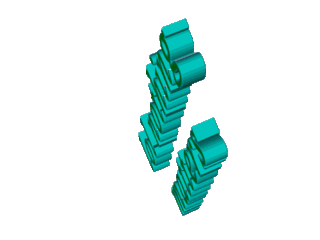
This kind of tribal, snarky, and renunciatory rhetoric predominates throughout a great deal of the web’s discursive spheres, in countless forms, both visual and textual. The reasons for this are complex and contested, but one worth dwelling on here is the “theory of pundit war” sketched by Gavin Mueller in a recent blog post, which locates some of the character of social media feuding in the ongoing deprofessionalization of journalism.
A 2013 New York Times profile gives us a particularly extreme portrait of the demands made by the effort to maintain some kind of career in online media, in the form of a full-time GIF producer: Deadspin contributor Tim Burke:
He works from home here, in what his colleagues call the “Burke-puter,” for its seamless integration of man and machine. It is less an office than an organism: a flashing, beeping, glowing, thrumming assault of screens, wires, remotes, tuners, phones, receivers, computers and general electronic effluvia wrapped around a person (“the monitor situation up there is insane,” said Burke’s wife, Lynn Hurtak.). Burke sits here alone in the dark day after day, for about 100 hours a week, watching dozens of sports events simultaneously…“I am not able to do many other things,” Burke said of his life in general.
Burke is something of an oddity as a GIF professional. Most GIFs, even the ones generating profit (or at least investment) for Giphy and Buzzfeed, are the vernacular creations of hobbyists. But most of those hobbyists have jobs too, many of which increasingly make the kinds of practical and psychic demands of Burke’s and offer far less compensatory satisfaction or acclaim.
The situation that Mueller describes does not apply only to those who have or seek careers in media, but to anyone who uses the social networks where discourses and information flows are guided by such people. As quotidian self-presentation becomes more widely public — searchable and permanent — people come more and more to comport themselves like media professionals. After all, their self-fashioning is creating surplus value for the owners of media networks.
More than a singular medium, the animated GIF is one of the tools by which social media users seek tribes and distinguish themselves. It loops endlessly because of a series of contingent technological decisions made at different corporations in the 1980s and 90s. But it is not technology that made the signal medium of our time one that repeats endlessly, never changing, telling us the same thing again and again and demanding a response it will neither heed nor acknowledge.
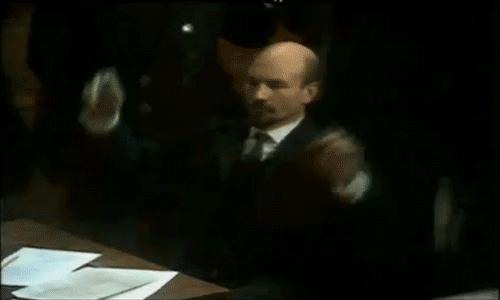
*This article originated as a paper presented at “Codes and Modes: The Character of Documentary Culture,” a conference held at Hunter College, City University of New York, November 7-9, 2014.
Image Credits:
1. Shut Up Nerd
2. Grumpy Cat
3. Early Animated gif
4. Intervene Racist
5. News Bite
6. Early Cinema
7. Lorna Mills
8. Infinite Dolly
9. Reaction: Happy
10. LOL Nothing Matters
11. Lenin says Deal with It
This article concludes the denotative nature of the GIF format, and what really inspires me is the connection it made to the early cinema, which was incredibly coincided with subjects like the unconscious reception and the responsive remakes.
I want to add on some of my thoughts of this magical format in terms of its role in the social media conversations. I mostly agree on the “nihilism” that discussed above, but to some extent, the GIF functions not only in a self-fashioned way, also it stands for a social-shared context of conveying and receiving the messages – especially the words for emotional reactions. I found it quite interesting because those ironic lower-profile animations also serve to lower the tension of aggression/harsh feelings/embarrassing phenomenon by a sense of self-attacking and then self-digestion. For me, if anyone who is really mad right now sends me a GIF of a roaring celebrity, I can get that message as well as recognize the lesser-tense phenomenon that we agree to build our conversation on – interestingly, by faking/detouring/covering the direct feelings it makes one feel accessible or even lovable. It somehow plays the similar role of bad languages, as I remembered one scholar affirms the legitimacy of bad words becaseu it potentially reduces the chances of more violent conflicts.